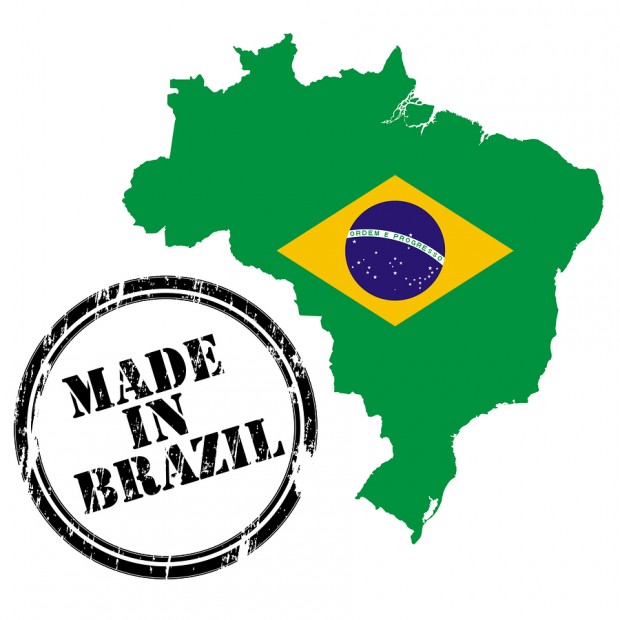In Santos, where Brazil’s normally bustling physical coffee trade is clustered in a handful of small buildings near the port, the family-owned brokers and multinational companies that move almost half the world’s arabica exports are eerily quiet.
With prices wildly volatile and uncertainty over the impact of the worst drought in 50 years mounting, spot business has ground almost to a halt, traders and roasters said.
With Brazil about to enter the June-through-August harvest peak, forecasts for the crop are still all over the map, and futures prices have been swinging as much as 10 percent a day due to the uncertainty.
Such conditions can easily magnify what would normally be a forgivable mistake for a trader into a career-ending one, a situation that has prompted many middlemen to take a step back.
“This week we moved maybe a couple containers,” Daniel Wolthers said from the green-coffee grading room of Wolthers Associates in Santos.
The quiet market belies the brisk trading that occurred here from December to early March, when producers were pushing the remains of last year’s crop as prices rose due to the drought.
“We had some good days early in the year, when we were moving 100 containers. That’s a day when you take the office out after work and pop Champagne,” Wolthers added.
For now, exports of green coffee continue to flow out at a pace of 2.5 million to 3.3 million bags a month and growing demand is expected to erode now hefty stocks, support prices and eventually force new sales by September, traders said.
But the traders’ caution over the future extends to big buyers like Starbucks, and even to farmers, who are in no hurry to sell the coffee they will soon harvest.
About four hours’ drive from Santos, in the heart of coffee country in the South Minas region, producers were noticeably absent from a recent event in the hilly town of Muzambinho, hosted by the world’s largest coffee cooperative, Cooxupe.
“Producers have sufficient capital now to finance their harvest and that’s where their attention is,” Cooxupe President Carlos Pelinho da Costa told Reuters, explaining why many farmers were absent.
Rodrigo Costa, an analyst at trader Newedge, said producers were holding back on sales after futures prices eased in the past week. Farmers are not convinced that they have seen the last of the drought’s impact on production, and they believe scarce supply could drive up prices further, he said.
Big buyers, many of whom have built up sufficient stocks to hold them through the harvest period, are also pulling back from the market. Starbucks’ director of trading and operations, Tim Scharrer, said at a conference in Guaruja recently that his company has put “buying on hold for now”.
Cooxupe’s sales director, Luiz Araujo, expressed a similar sentiment: “It’s hard to put a finger on the crop. Buyers don’t want to close deals and find out the next day they fixed a price wrong and lost money.”
Part of the market uncertainty over the size of Brazil’s crop, which has contributed to the price swings on the futures market, stems from the complexity of forecasting coffee.
Satellite images, which can do wonders forecasting grain crops, are not as good with coffee trees, which can produce cherries that are void of beans. Only after the fruit is dried on sun patios do farmers really know what they have.
Heading into harvest, the waxy-leafed trees in South Minas, where the drought will likely have the greatest impact on output, appear thick with red cherries.
But yield results from the beans coming off the sun-drying patios in the first couple months of harvest may be the only data that truly settles the debate over the size of the crop.
Market uncertainty from the rare drought has spread to other commodities produced in the region. Brazil’s largest producer of sugar, Cosan SA, said that it had slowed fixing prices for future delivery due to the drought.
As for coffee, the world’s habit of drinking it will force buyers and producers back to the market eventually.
“We expect demand to support prices for August and September deliveries,” Cooxupe’s Araujo said about the approach of Northern Hemisphere winter months, when buying picks up in the United States and Europe.





















 Why the Middle Market Matters and How Insurers Can Capture It
Why the Middle Market Matters and How Insurers Can Capture It  Artificial Intelligence Is Rewriting the Rules for Commercial Lines
Artificial Intelligence Is Rewriting the Rules for Commercial Lines  First Atlantic Hurricane Forecast for 2026 Suggests Season Close to 30-Year Norm
First Atlantic Hurricane Forecast for 2026 Suggests Season Close to 30-Year Norm  Nearly Half of 100 Largest P/C Insurers Destroy Value: ACORD
Nearly Half of 100 Largest P/C Insurers Destroy Value: ACORD 




